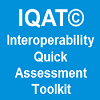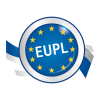
Covered by:
| Recommendation 27 | Ensure that legislation is screened by means of ‘interoperability checks’, to identify any barriers to interoperability. When drafting legislation to establish a European public service, seek to make it consistent with relevant legislation, perform a ‘digital check’ and consider data protection requirements. Supporting Solutions |
| Legal initiative | Description |
Recommendations |
|
Short title: INSPIRE DIRECTIVE Status: In force and transposed |
The INSPIRE Directive lays down general rules setting up an infrastructure for spatial information in Europe for the purposes of European Union (EU) environmental policies and for policies or activities which may have an impact on the environment. The European infrastructure builds on that of spatial information that is established and operated by EU countries. |
Recommendation 27 |
|
Status: In force and transposed |
The Electronic Identification and Trust Services (eIDAS) Regulation creates a new system for secure electronic interactions across the EU between businesses, citizens and public authorities. A revision of the eIDAS Regulation has been proposed, see: Proposal for a Regulation of the European Parliament and of the Council amending Regulation (EU) No 910/2014 as regards establishing a framework for a European Digital Identity, URL: https://op.europa.eu/en/publication-detail/-/publication/5d88943a-c458-… |
Recommendation 27 |
| Solution | Description | Associated Recommendations |

|
The CAMSS Tools are the assessment tools provided by the CAMSS Team. They are publicly available and support the fulfilment of assessments of standards and technical specifications and standard setting/developing organisations. | Recommendation 27 |

|
CAMSS-as-a-Service, provides a service which aim is the assessment of standards and specifications on demand through the use of CAMSS Tools. The author of the assessments is the CAMSS Team. | Recommendation 27 |

|
The Cartography Tool (CarTool©) brings together high-level support for the EIRA© as a plug-in for the popular ArchiMate® modelling tool Archi®. It includes both editing features, to model solutions using the EIRA©, and querying functionalities to query an EIRA©-based Cartography of solutions. CAMSS Team. | Recommendation 27 |

Location Framework Blueprint
|
The European Union Location Framework (EULF) Blueprint is a framework of recommendations and related guidance for publishing and using location information and applying interoperability principles in digital government. The EULF Blueprint was initially developed through the EULF project in the ISA programme. The content has been updated extensively through the European Location Interoperability Solutions for e-Government (ELISE) project, which is part of the ISA2 programme. | Recommendation 27 |

|
The main objective is to create a shared European data model about representation powers and mandates, which allows powers/mandates information originated in the information systems of one country to be directly processed automatically by the information systems in other country. The data model will be tested in real life through pilots with some MS and the technical specification will be put forward to the CEF eID Operational Management Board for endorsement and proposed to be incorporated in the CEF eID sample implementation and extension of the CEF eID technical specifications. | Recommendation 27 |

|
The objective of the IQAT© is to allow Solution Owners to assess the Potential Interoperability of their software solutions supporting Public Services. The toolkit is based on a specific conceptual model for the Interoperability assessment of software solutions, which relies on four interoperability areas: Interoperability (IOP) Governance, Software Architecture, |
Recommendation 27 |

|
The European Union Public Licence is a unique and open source licence created by the European Commission that is available in 23 official EU languages and can be used by anyone. The purpose of EUPL is to encourage public administrations, starting with the EU institutions themselves, to embrace the free and open source model. It is legally consistent with the copyright law of all EU Member States, and supports other popular open source licences. It is especially well-suited for public administrations and interoperability tools shared on Joinup. |
Recommendation 27 |

|
The ICT Impact Assessment Guidelines provide practical tools and templates for assessing, both in qualitative and quantitative terms, the ICT impacts of new Commission initiatives undergoing an IA. ICT impacts are the consequences a specific Commission initiative can have in relation to the use of ICT for the implementation of EU policies. This may entail the development of new ICT solutions or the adaptation of existing ones. | Recommendation 27 |

LIMAPS v1.0.0 |
This is the Beta version of the Legal Interoperability Maturity Assessment of a Public Service (LIMAPS) survey. This Beta version of the LIMAPS Survey has been released on the 21 April 2020 on Joinup. It is a user-friendly online questionnaire, designed as a self-assessment tool to assist public service owners to evaluate key legal interoperability aspects of their digital public service. The current Beta version of LIMAPS (LIMAPS v1.0.0 Beta) is available at the EU survey portal: https://ec.europa.eu/eusurvey/runner/limaps-beta. |
Recommendation 27 |

